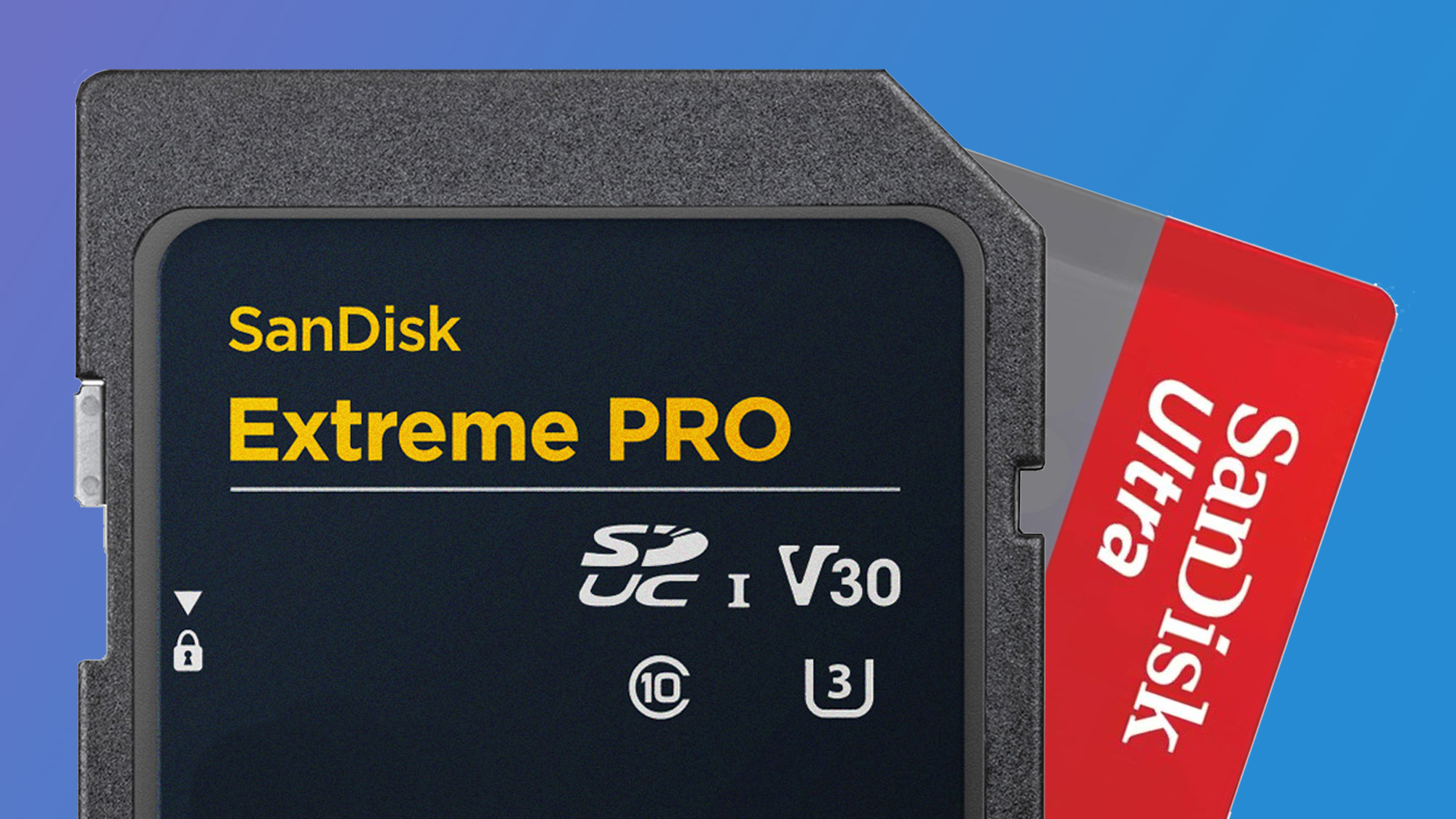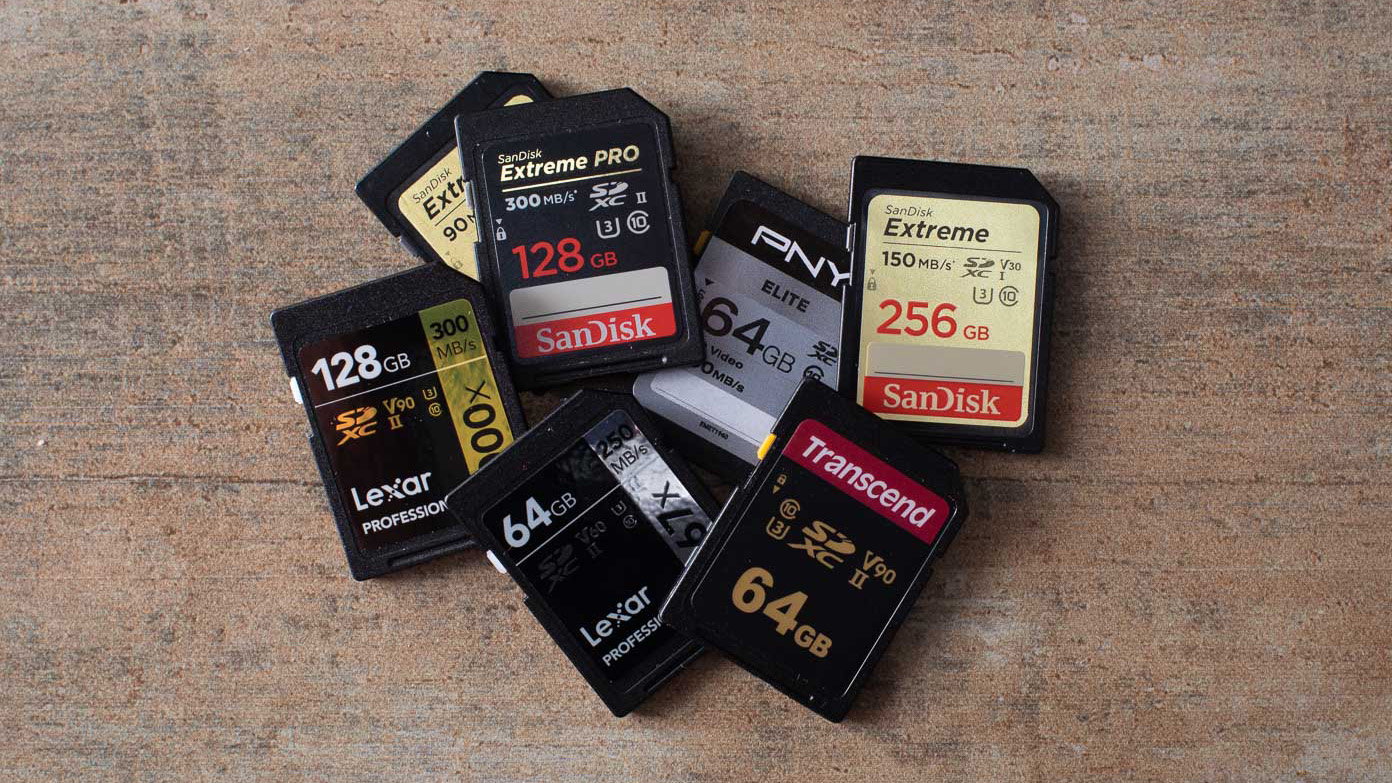SanDisk announces the world’s first 8TB SD card – the biggest memory card we’ve ever seen
Plus a world-first 4TB microSD card to go with it

Running out of camera or gaming storage could soon be a thing of the past – SanDisk owner Western Digital has announced a pair of ground-breaking memory cards: the world’s first 8TB SD card, alongside the world’s first 4TB microSD card. Whether you’re shooting stills or video, both capacities could unlock huge creative flexibility – assuming you look after them.
When it comes to memory cards, it’s always been a race for space. These new cards put Western Digital right at the head of the field, pushing the boundaries of portable storage – and they quickly follow the announcement of the first 4TB SD card, which was unveiled in April.
With a SanDisk 8TB SDUC UHS-I card in one of the best mirrorless cameras, you’d be able to shoot approximately 165,000 raw files at 24MP. Whatever your industry or genre, that’s a huge volume of stills on a single card. Similarly, with a SanDisk 4TB microSDUC UHS-I in a Nintendo Switch, you could store a library of more than 660 games with a 12GB file size. That’s significantly more than anything else in our list of the largest microSD cards.
Announced as part of the Future of Memory and Storage Conference in California, the two SanDisk cards set a new benchmark for digital storage. Both use the Secure Digital Ultra Capacity (SDUC) standard, which is theoretically capable of up to 128TB storage capacity.
Western Digital has already raised the bar once this year, announcing that 4TB SD card and a 2TB microSD card at the NAB Show in April. These new cards go another step further, unlocking twice as much capacity again – although we don't yet know when they'll go on sale or how big their price tags will be. For reference, it's 1TB Extreme Pro card go for $140 / £135 on Amazon, so expect an 8TB version to cost considerably more.
More space than most people need?

In today’s era of 8K video and high-res stills, storage capacity is crucial to a seamless workflow. High-capacity memory cards mean you can shoot for longer before having to switch to a different card. For professionals, an 8TB SD card offers the tantalizing prospect of using a single card for an entire shoot.
A 4TB microSD card does the same for the best drones, most of which use microSD storage. So, too, do many the best smartphones and handheld gaming devices, including the Nintendo Switch and Steam Deck. With the new SanDisk card, you would no longer need to carry a wallet of microSD cards.
Get daily insight, inspiration and deals in your inbox
Sign up for breaking news, reviews, opinion, top tech deals, and more.
However, there are a couple of caveats here. Both of the new memory cards announced by Western Digital are UHS-I. That means they’re slower than many of the best SD cards and best microSD cards, which are rated at UHS-II. So while you’re getting a lot more storage space, you’ll get slower transfer speeds.
Western Digital also hasn’t shared the V classification for either card. Its existing SanDisk 1.5TB Ultra microSDXC UHS-I card has a V10 speed rating, meaning minimum transfer speeds of a lowly 10MB/s. The SanDisk 4TB Extreme Pro SDUC announced in April fares better with a V30 rating, which means a minimum of 30MB/s transfers. Even that, though, has the potential to throttle burst speeds and video frame rates.
Speed aside, there remains a concern over loss or failure. It’s long been best practice to use backup cards, but also to spread your data – whether that’s images, video or files – across multiple cards. That way, if any one fails or gets lost, you don’t lose your entire library. While an 8TB offers a huge convenience gain, many people will likely prefer to use several smaller cards for peace of mind.
Even so, there’s no denying that Western Digital has achieved something impressive here. When you consider that the largest SD cards in 1999 had just 32MB of storage capacity, an 8TB memory card is a major advancement. There’s no official word on pricing yet, but don’t expect the new cards to come cheap.
More from TechRadar
Formerly News Editor at Stuff, Chris now writes about tech from his tropical office. Sidetracked by sustainable stuff, he’s also keen on cameras, classic cars and any gear that gets better with age.
